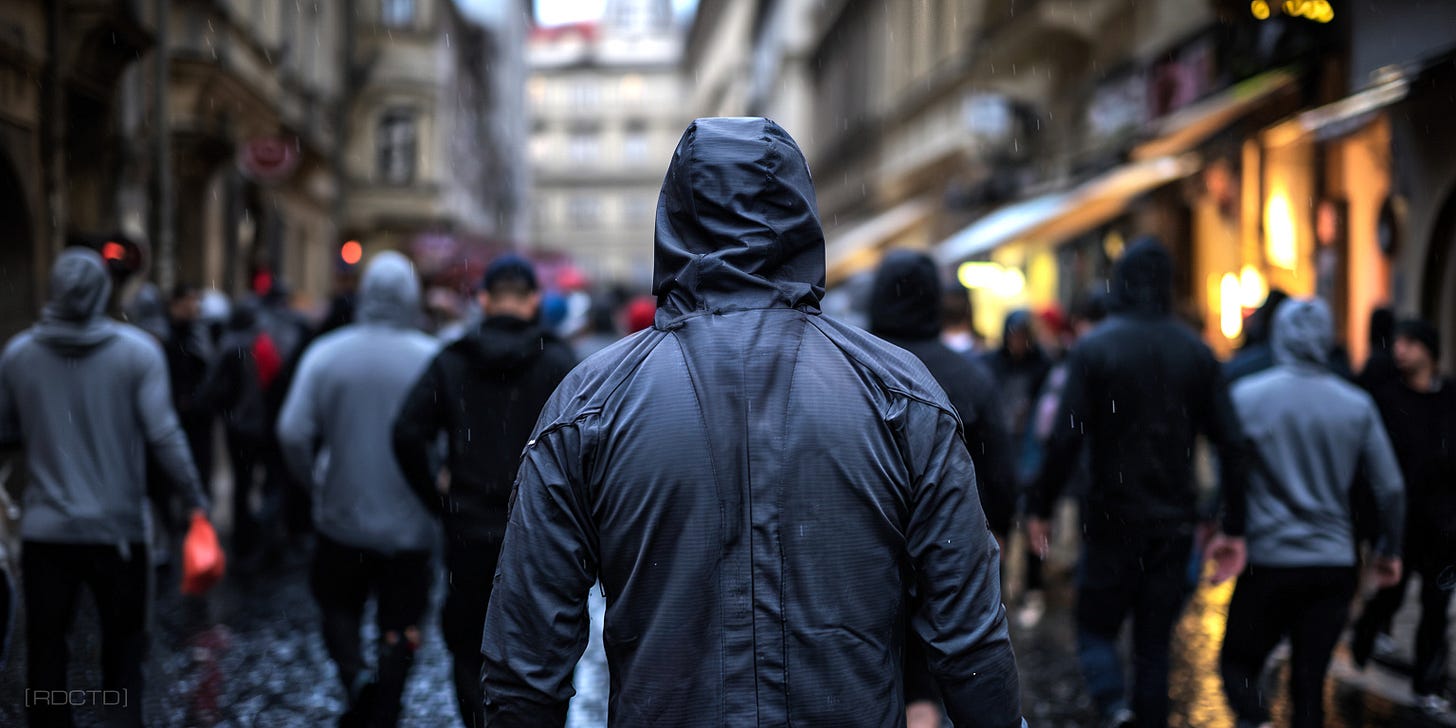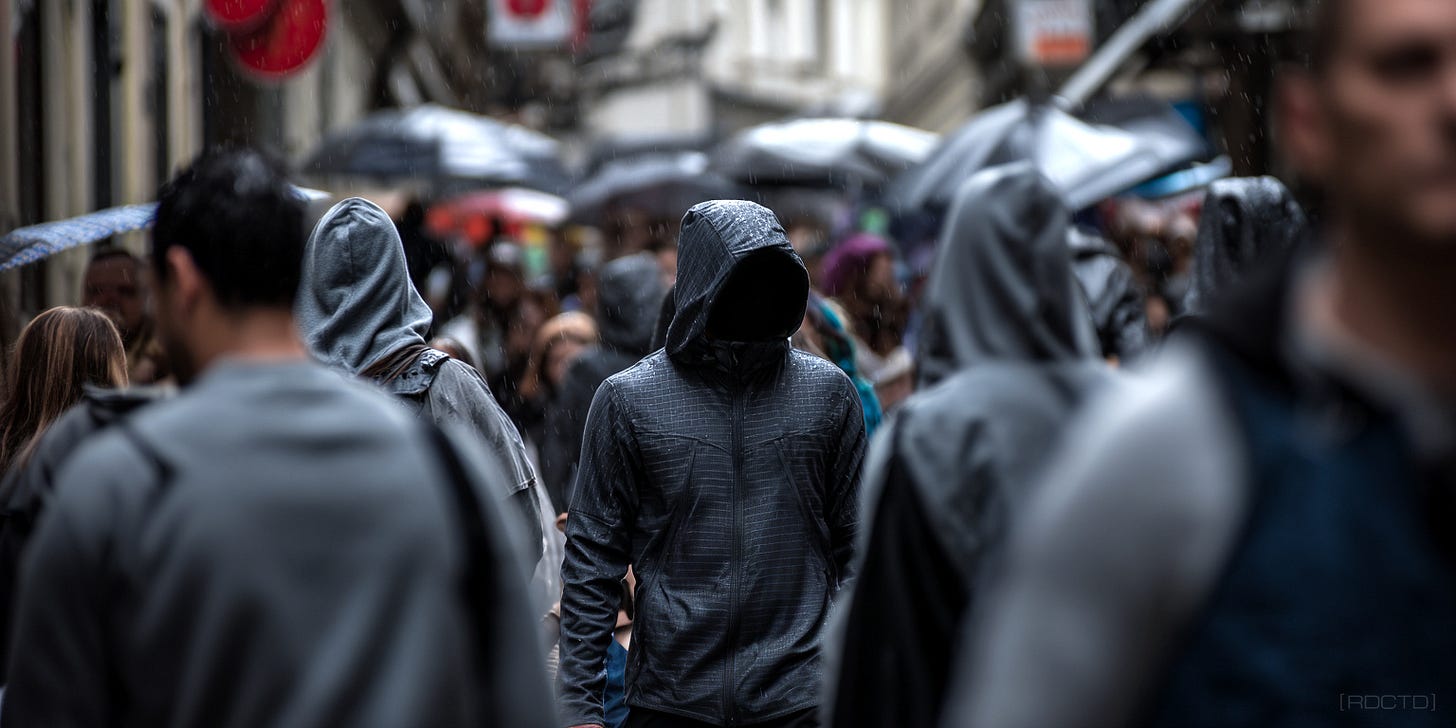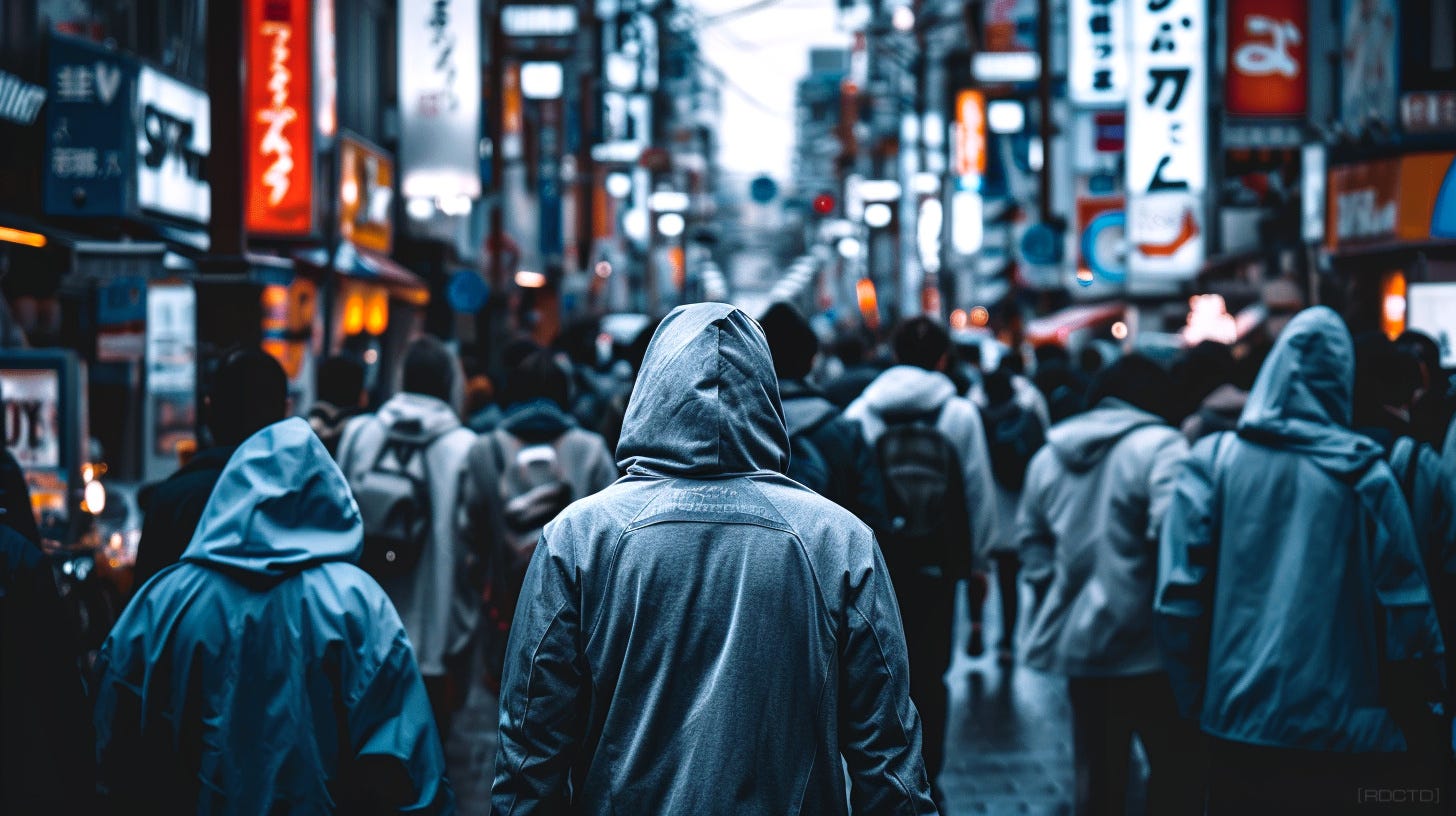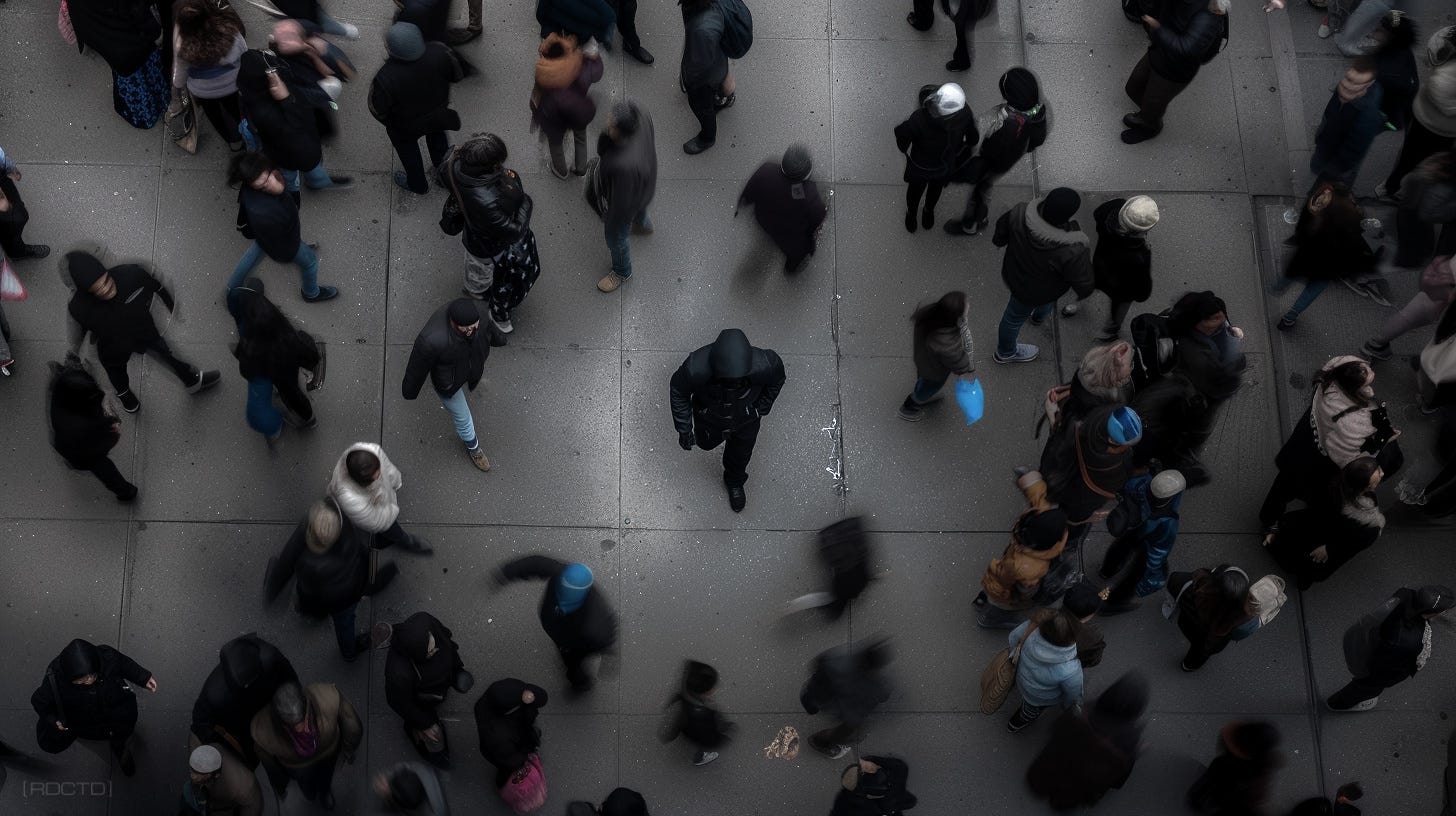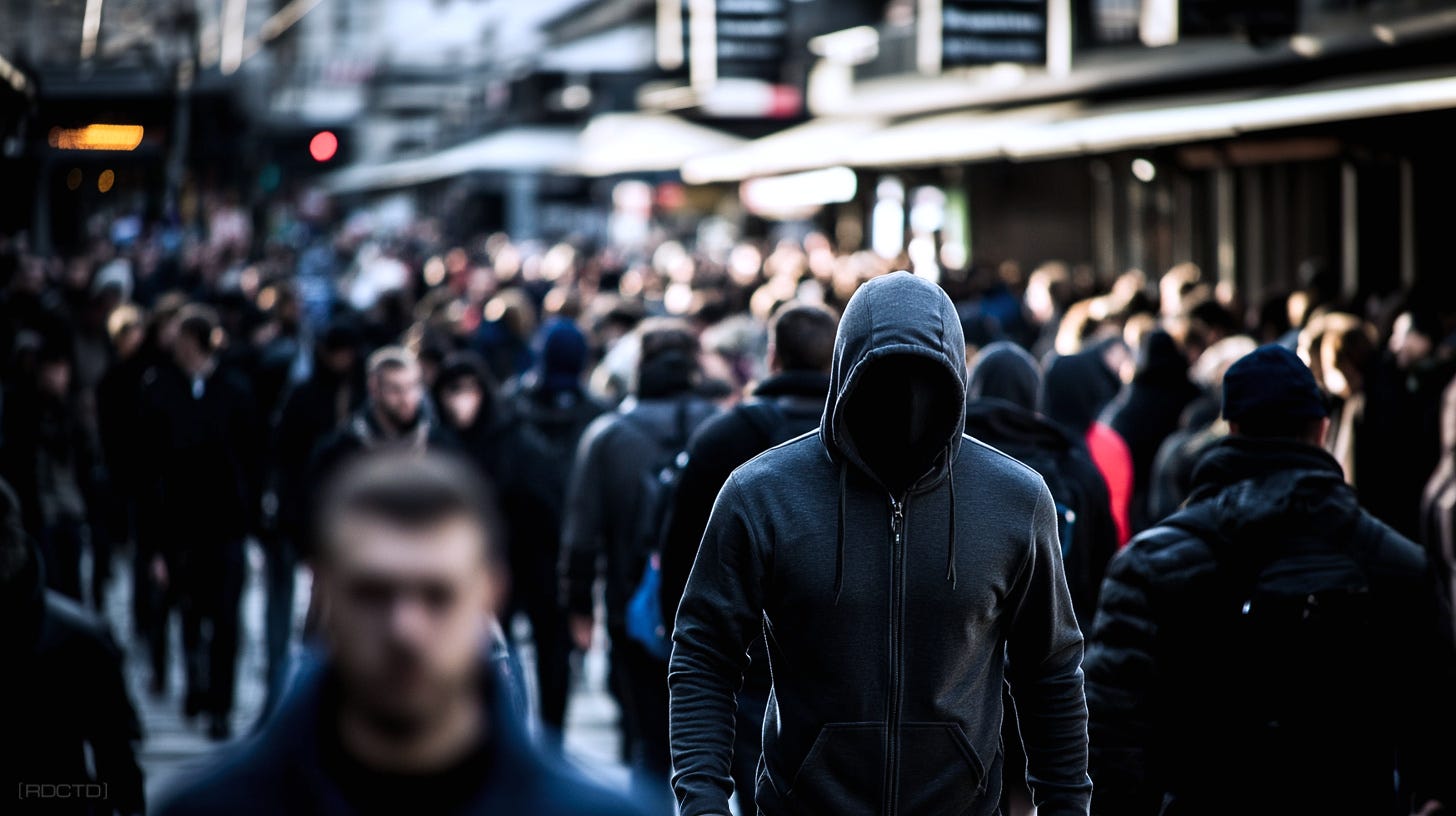How to be a Gray Man
CIA Playbook Adapted Guide
The Gray Man method stands as one of the oldest and most vital pillars of covert operations. This is how to adopt it:
It’s the art of moving through environments unnoticed, blending into the background so effectively that no one remembers you after you’re gone.
For operatives, this skillset is just as much a convenience as it is operational. In daily “normal” life, it’s just as valuable. You could be navigating crowded cities, traveling through unstable regions, or avoiding unnecessary attention, the ability to remain unremarkable is a powerful edge.
Being gray is obviously not about actual invisibility. But it is becoming functionally invisible - passing through checkpoints, crowds, surveillance zones, or neighborhoods without drawing a second glance. The trick lies in understanding how people perceive others and learning to manage those perceptions.
The Psychology of Blending In
Human attention is a filter, not a spotlight, and it’s built on pattern recognition. The brain uses a system called selective attention - filtering thousands of visual and auditory cues every second to focus only on what seems important or unusual.
Anything that disrupts the baseline pattern of an environment triggers this focus. Bright colors, erratic movement, excessive confidence, or visible anxiety all act as “attention hooks” or cues.
To be gray, you eliminate those hooks and cues, aligning with the crowd’s baseline.
Operatives exploit what psychologists call the cocktail party effect - the mind’s ability to ignore most stimuli in a crowded environment while locking onto anomalies.
If you appear average in dress, tone, and body language, you slide beneath that threshold. If you introduce even a slight irregularity - such as, wearing boots in a beach town, people’s subconscious tags you as out of place.
Another critical layer is categorical perception. Most people quickly sort strangers into mental categories: “local,” “tourist,” “authority,” “threat,” or “background.” A successful Gray Man engineers his appearance and behavior so that observers place him in the least interesting category - typically “background” or “passerby.” The category must be believable but not memorable.
Blending in is aligning yourself with the expectations of the human brain. So it’s more than trying to not stand out or be nondescript. Once you understand how attention is captured and how categories are assigned, you can deliberately position yourself where no one looks twice.
Appearance
Clothing is one of the fastest classification tools the brain uses to classify people. In less than half a second, people form judgments about wealth, occupation, and even intent based on attire and grooming.
For an operative, this means that what you wear can greatly dictate whether you’re noticed or ignored.
Dress to the Baseline
Conduct a pattern baseline assessment, observe what people wear in the area. A hoodie might blend in at a college campus but stand out in a high-end shopping district. Every environment has a visual baseline. In Manhattan’s financial district, that baseline is business attire; in a rural market, it’s weathered workwear.
Operatives conduct what’s called a pattern baseline assessment, studying what’s normal before stepping into it.
Color and Contrast
Muted tones reduce visual salience (how quickly something pops out in the field of view). Grays, blues, and earth tones dissolve into the background. Muted tones like gray, navy, and earth colors reduce visual salience.
Bright colors or high-contrast patterns register faster in peripheral vision, which is why uniforms and safety vests use them.
In addition, avoid large or otherwise prominent logos, patches, or tactical gear serve as memory anchors. They break anonymity.
Texture and Fit
Crisp, overly formal clothing may signal wealth or authority; dirty or ragged clothes may signal instability. A Gray Man adopts the “middle average” - clean but unremarkable.
Getting this balance just right depends on the location and your intent.
Grooming
This is part of what’s called identity markers - the small details the brain uses to categorize and recall strangers. Distinctive traits like sharp beards, styled haircuts, or visible tattoos act as salient identifiers, making you easier to remember and easier to describe later.
In field terms, they become “handles” for surveillance teams, details that anchor you in memory and on reports. A Gray Man removes those handles. Neutral grooming creates low-resolution recall, where an observer might register “average haircut, no facial hair, nothing notable,” which provides no useful lead.
Even choices like cologne, skincare routines, or posture while grooming can tip you toward “memorable” or “forgettable.”
The most effective standard is calibrated normalcy - grooming that blends seamlessly with the dominant demographic profile of your surroundings.
Body Language and Movement
People are wired to read nonverbal cues faster than words. This comes from thin-slice perception - the brain’s ability to form judgments in milliseconds based on posture, gait, and microexpressions.
Long before someone consciously notices your clothing, they’ve already assessed whether you’re confident, anxious, or aggressive. Operatives treat body language as a form of signature management: every movement either adds to their cover or undermines it.
Cadence Matching
When your walking pace mirrors that of the surrounding crowd, you dissolve into its rhythm. This principle, known as entrainment, is a subconscious synchronization humans naturally do with one another, especially in groups.
A mismatched pace (too fast, too slow, or erratic) creates friction in the observer’s mind, drawing attention even if they can’t articulate why.
By deliberately aligning cadence, an operative turns motion into camouflage, reducing the chance of standing out in moving environments like streets, train stations, or airports.
Avoiding Target Indicators
Trained surveillance teams look for what they call behavioral anomalies - actions that suggest awareness of risk. Repeatedly checking over your shoulder, scanning rooftops, or adjusting concealed equipment are all red flags.
Instead, operatives use indirect observation methods: a glance into a store window to read reflections, listening to the cadence of footsteps behind them, or letting natural gestures mask deliberate surveillance detection.
The goal isn’t to appear oblivious, but to appear appropriately engaged with the environment without showing tactical intent.
Relaxed Neutral Posture
The body broadcasts tension even when the face doesn’t. Elevated shoulders, clenched fists, or stiff gait signal stress, while exaggerated swagger signals overconfidence - both are remembered.
A Gray Man adopts a posture of calibrated neutrality: shoulders loose, hands relaxed, weight distributed evenly. This broadcasts belonging without dominance, a position that feels ordinary to observers.
When combined with calm breathing and controlled movement, the operative effectively projects low-threat presence, ensuring they fade into the background.
Speech and Behavior
Speech is more than words - it’s a data stream that reveals origin, education level, and sometimes intent. Linguists and interrogators rely on sociolinguistic profiling, which extracts cues from accent, vocabulary, pacing, and hesitation patterns.
These cues influence how quickly someone is categorized as “local,” “outsider,” or “authority.” For an operative, controlling speech is to sound forgettable, rarely to sound impressive.
Linguistic Accommodation
People instinctively mirror each other’s language patterns. Operatives use this intentionally, adjusting their rhythm, vocabulary, and even pitch to align with those around them. Slight mimicry smooths interaction, but overdoing it appears artificial and suspicious.
The goal is calibration - close enough to reduce friction, but subtle enough that no one notices the adjustment.
Balanced Interaction
As per hard questioning to interrogation level interactions - people who give either too much or too little information create curiosity, which sticks them in memory. Overexplaining invites more questions, while one-word replies signal guardedness.
The operative targets a middle ground: average-length responses that satisfy social norms while revealing nothing substantive. This balance keeps the interaction transactional, not memorable.
Controlled Affect
Emotional regulation is central to being gray. Strong emotions (anger, laughter, or visible fear) are encoded in memory far more strongly than neutral behavior. An operative avoids spikes, projecting measured calm even under stress.
This doesn’t mean appearing robotic - it means shaping reactions to remain in the “ordinary” range so that observers later recall no emotional highlights.
Speech and behavior form the soundtrack of presence.
Clothing may let you blend, but the wrong word or tone can betray you instantly. The Gray Man uses verbal camouflage, shaping conversations so they pass unnoticed, leaving no hooks for memory.
If someone tries to recall you later, they’ll struggle to describe more than “average guy, nothing unusual.”
Covert Situational Awareness
Situational awareness is the backbone of operations and survival, but it has to be invisible. Humans have evolved gaze detection mechanisms so sensitive that even subtle eye movements are picked up subconsciously - a phenomenon known as the gaze cueing effect.
Overt scanning makes you look tactical, paranoid, or predatory, all of which break the Gray Man profile. Operatives train to gather maximum information while appearing minimally engaged, blending awareness into natural behavior:



